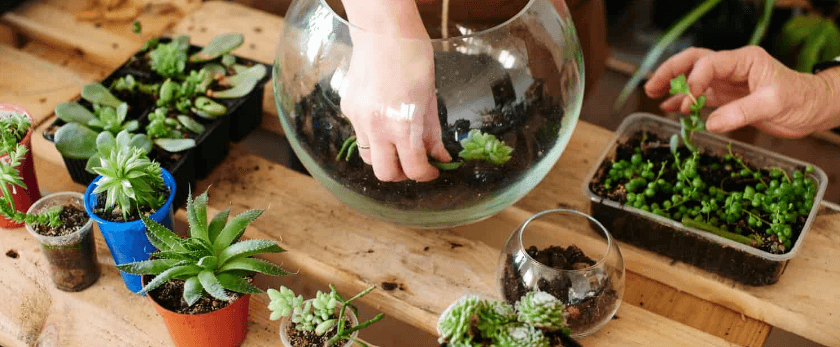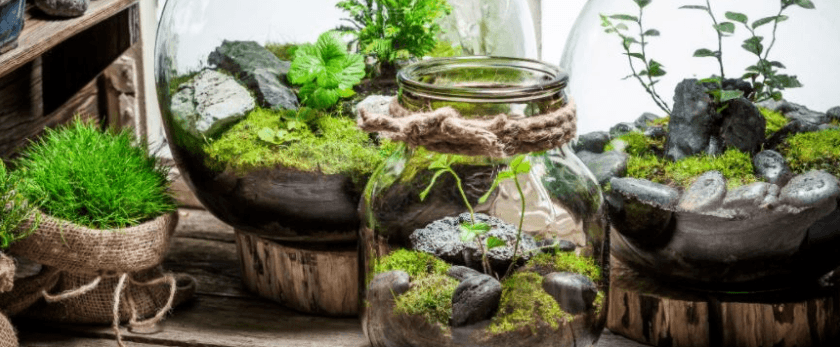Are you looking for a fun and eco-friendly way to decorate your home or office?
Look no further than homemade terrariums! These miniature gardens are not only aesthetically pleasing, but they also have numerous environmental benefits. In this article, we will discuss why traditional terrariums can be harmful to the environment and how making your own can be a more sustainable option. We will also provide a step-by-step guide on how to create your own homemade terrarium.
Why Traditional Terrariums are Bad for the Environment
Traditional terrariums, also known as closed terrariums, are sealed glass containers that house plants and soil. While they may seem like a great way to bring nature indoors, they can actually have negative impacts on the environment.
1. Use of Non-Biodegradable Materials
Most traditional terrariums are made with non-biodegradable materials such as plastic or glass. These materials take hundreds of years to decompose, contributing to the growing problem of plastic pollution in our oceans and landfills.
2. High Energy Consumption
The production of traditional terrariums requires a significant amount of energy, from the extraction of raw materials to the manufacturing process. This energy consumption contributes to greenhouse gas emissions and climate change.
3. Limited Air Circulation
Due to their sealed design, traditional terrariums have limited air circulation. This can lead to the buildup of harmful chemicals and bacteria, making it difficult for plants to thrive.
4. Use of Chemicals
To keep traditional terrariums looking pristine, many manufacturers use chemical fertilizers and pesticides. These chemicals can be harmful to both the environment and our health.
Why Making Your Own Terrarium is Better for the Environment
Making your own terrarium is a simple and sustainable solution that can help reduce your carbon footprint and contribute to a greener future. Here are some reasons why:
1. Use of Recycled Materials
When making your own terrarium, you have the option to use recycled materials such as glass jars or containers. This reduces the demand for new materials and helps divert waste from landfills.
2. Low Energy Consumption
Creating a homemade terrarium requires minimal energy compared to the production of traditional terrariums. This helps reduce greenhouse gas emissions and conserve natural resources.
3. Natural Air Circulation
Unlike traditional terrariums, homemade terrariums have natural air circulation. This allows for better plant growth and reduces the need for chemical fertilizers and pesticides.
4. Sustainable Plant Choices
When making your own terrarium, you have the freedom to choose sustainable plant options. This includes using native plants, which require less maintenance and are better adapted to the local environment.

What You Will Need
To make your own homemade terrarium, you will need the following materials:
- A glass jar or container (make sure it has a wide opening for easy access)
- Gravel or pebbles
- Activated charcoal
- Potting soil
- Small plants (succulents, cacti, and ferns are great options)
- Decorative elements (optional)
- Spray bottle filled with water
Step-by-Step Guide
1. Prepare Your Container
Start by cleaning your glass jar or container with soap and water. Make sure it is completely dry before moving on to the next step.
2. Add a Layer of Gravel
Add a layer of gravel or pebbles to the bottom of your container. This will help with drainage and prevent water from pooling at the bottom.
3. Add Activated Charcoal
Next, add a layer of activated charcoal on top of the gravel. This will help absorb any excess water and keep the terrarium free from bacteria and odors.
4. Add Potting Soil
Add a layer of potting soil on top of the charcoal. Make sure to leave enough space for your plants to fit comfortably.
5. Plant Your Plants
Carefully remove your plants from their pots and gently loosen the roots. Place them in the terrarium, making sure to leave enough space between each plant.
6. Add Decorative Elements (Optional)
If you want to add some decorative elements to your terrarium, now is the time to do so. This can include small figurines, rocks, or moss.
7. Mist with Water
Using a spray bottle, mist the soil and plants with water. Make sure not to overwater, as this can lead to root rot.
8. Place in Indirect Sunlight
Place your terrarium in an area with indirect sunlight. Avoid placing it in direct sunlight, as this can cause the terrarium to overheat and damage the plants.
9. Maintenance
To keep your terrarium healthy, make sure to mist it with water every few days. If you notice any dead leaves or plants, remove them to prevent mold and bacteria growth.
Responsible Disposal
When it comes time to dispose of your homemade terrarium, it is important to do so responsibly. Here are some tips on how to dispose of your terrarium in an eco-friendly manner:
- Reuse the container for another project or donate it to a thrift store.
- If the container is not reusable, recycle it if possible.
- If the plants are still alive, consider replanting them in your garden or giving them to a friend.
- If the plants are not suitable for replanting, compost them instead of throwing them in the trash.
Conclusion
Homemade terrariums are a great way to bring a piece of nature into your home while also being environmentally friendly. By using recycled materials and sustainable plant choices, you can reduce your carbon footprint and contribute to a greener future. So why not give it a try and create your own homemade terrarium today? Your home and the planet will thank you.










